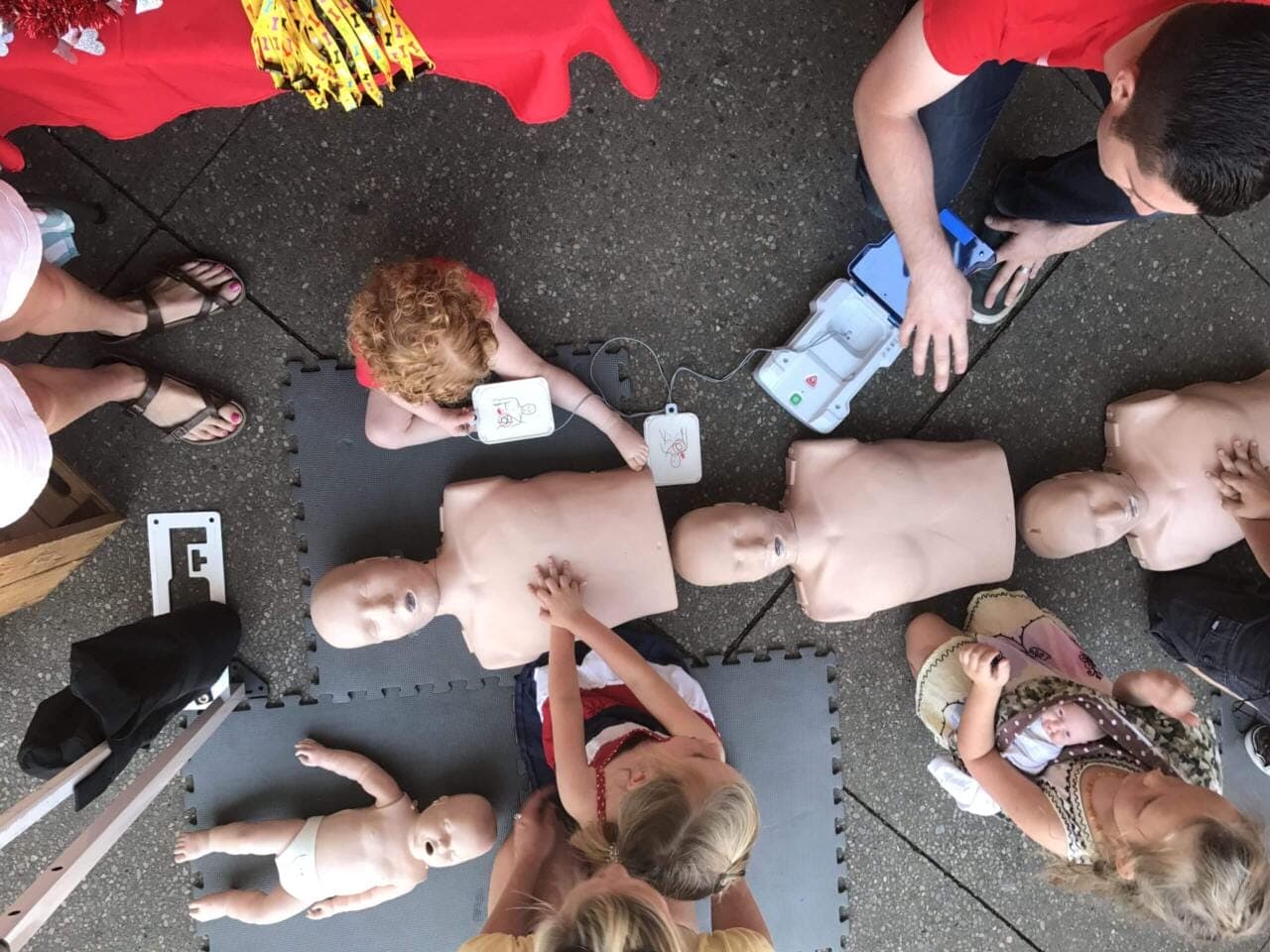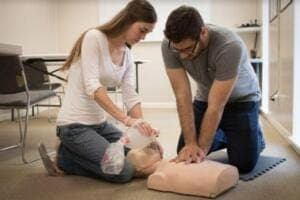How to: Become A CPR Instructor

Are you considering becoming a CPR Trainer? CPR Instructor Affiliates explains How To Become A CPR Trainer & Teach CPR Classes with insights into training, courses and pricing.
What does a CPR trainer do?
CPR Trainers are a valuable resource to our communities. If you are passionate about educating others and saving lives, you may be the perfect candidate to become a CPR trainer. CPR Trainers are people that are certified through a credentialed organization, such as the American Heart Association, to teach CPR and basic life support. CPR trainers may teach CPR to people in the healthcare field or also lay responders that work in places such as daycares, schools, or manufacturing settings.
Some CPR trainers work for a company to do their in house training and others teach in the community when people contact them for training. Depending on the area they are located some CPR trainers teach a lot of people in a certain industry whereas other areas see a large variety of people needing their services.
Most every CPR trainer travels to teach group classes. Generally, groups like to be trained at their location or office for convenience. However, it’s generally not recommended that instructors travel to meet individuals for training. Instead, for individuals, CPR trainers can offer ‘public classes’ that anyone can register for and come to the instructor’s location. While some CPR trainers have brick and mortar offices where they do their own training, some do not. For instructors without a physical location, it’s best to teach in a public space or room for rent at a hotel conference room, library room, or a church.
There is also a demand for CPR trainers that are able to travel outside their locale. For large organizations, logistics can be a headache and they opt to hire one group to train all their locations across their state, region, or country. It’s not uncommon to find CPR trainers that travel to teach often.

What are the steps to becoming a CPR Trainer?
To become a CPR trainer, you will need to meet the prerequisites for a CPR instructor class and then take a CPR instructor class. We usually recommend that CPR trainers do their initial training through the American Heart Association. Because the American Heart Association (AHA) is the authoritative body that researches and develops CPR guidelines, they are the most recognized source for CPR certification. After becoming an AHA CPR instructor, you can easily ‘bridge’ to teach for the American Red Cross or Health and Safety Institute.
- First Step: You will need to find an authorized AHA Training Center offering instructor classes. They will have you fill out an Instructor Candidate Application before enrolling in an AHA Instructor class. We recommend using the Class Eagle Heath and Safety Directory to locate a Training Center.
- Second Step: In order to qualify to take an AHA CPR instructor course, you will need to have a current AHA certification in the discipline you want to teach. For AHA courses, ‘discipline’ means the type of course. Some AHA disciplines include: Heartsaver CPR & First Aid, BLS for Healthcare Providers, Advanced Cardiac Life Support, and Pediatric Emergency Assessment Recognition and Stabilization. So, if you would like to take an AHA BLS Instructor course you would first need to take an AHA BLS course as a student and acquire a provider certification.
- Next Step: You will need to complete an online AHA Instructor Essentials course for the discipline you wish to teach and then attend the hands-on session hosted by the Training Center.
- Final Step: You must teach a course and be monitored doing so within 6 months of completing the hands-on Instructor Essentials course. Your instructor card should be dated on the date of your monitoring and will be valid for 2 years.
How long do CPR training classes take?
The online Instructor Essentials course portion takes 1.25 hours to complete. This can be done at your convenience, but must be done before attending the hands-on classroom portion.
The hands-on classroom portion of the instructor course takes approximately 8 hours to complete. Usually this is done in one day but some places may spread it out over the course of two days. The course length can also vary depending on the number of students in the course.
How much does it cost to become a CPR Trainer?
CPR Instructor course prices vary depending on the location and Training Center you go through. Costs you can expect include:
- Initial Provider Course: $75-$150
- Instructor Essentials online course: $35
- Instructor hands-on/classroom course: $250-$600
- Monitoring: $0-$150 (Some Training Centers may include this in the classroom course cost)
Total Course cost could be as low as $285 if you already have taken previous training and could cost as much as $935 if you don’t have previous training and are in a more expensive area.
Many people find that they need to travel to find an instructor course that fits their schedule or budget. Consider that there may be additional costs for lodging and travel if this is the case for you.
For more information about how much money it costs to start a CPR business check out this video.
Do I need any special skills to become a CPR trainer?
CPR Trainers should be people that are able to manage a classroom, speak in front of others, and be comfortable working with a diverse group of clientele. These skills are important for your success in the role as well as for your students to be equipped with lifesaving training.
Many people think that CPR instructors have to have backgrounds in the medical field. However, a medical background is not required to be an AHA CPR trainer. Although it may be helpful and make it easier to understand the course content there is no required experience or qualifications to become a CPR instructor apart from meeting the course prerequisites discussed above.
How long does CPR Trainer certification last?
The American Heart Association Instructor Certifications are valid for two years. In order to renew you will need to teach at least 4 classes over the course of two years and be monitored by a Training Center to verify your competency. Some Training Centers may give short extensions to renew if there are extenuating circumstances, but you will not be allowed to teach courses once your certification card has expired.


